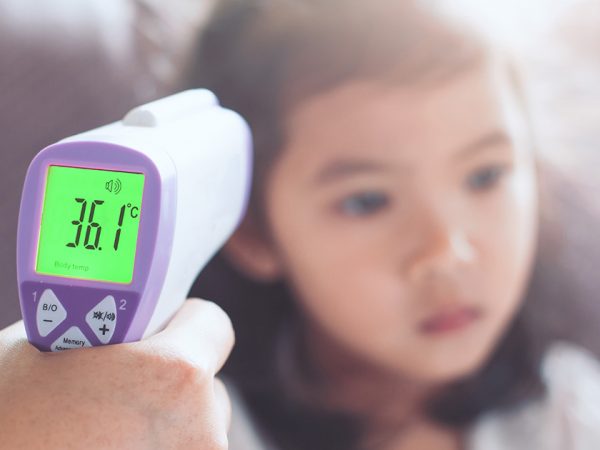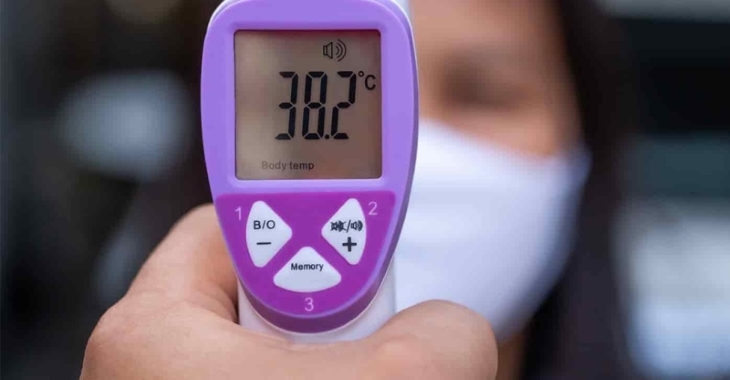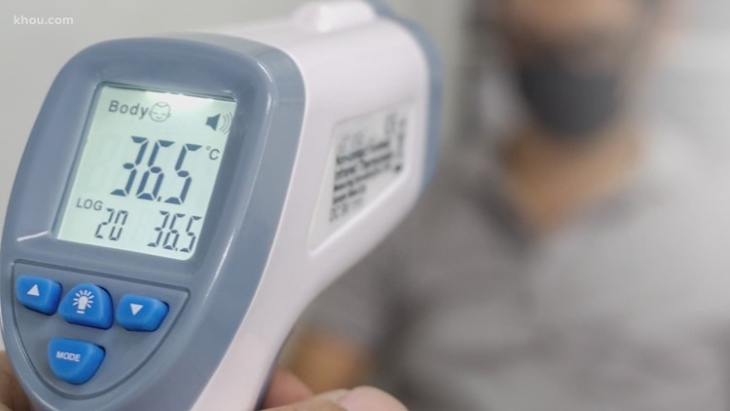25
Feb

With the outbreak of the coronavirus, non-contact infrared thermometer pistols have been widely utilized as the most common instrument for scanning people in crowded locations to detect those with raised temperatures, which is the first sign of a virus infection. These nonetheless, effective tools for monitoring body temperature have steadily surpassed traditional probe-style thermometers, especially in medical applications, because they offer non-invasive, non-contaminated, quick, and accurate temperature detection.
Despite their widespread use, a lot of people still don’t know how to use them.
When shopping, make sure to buy the right infrared thermometers medical model to quickly and accurately read your body’s temperature. Since there are so many different brands on the market, always opt for a high-quality one that’s also FDA certified. “For medical use” specified thermometers are the ideal option as they have a narrow temperature range of roughly 10°C/20°F (suitable for detecting body temperatures in the range of 32.43°C/90..110°F), allowing for greater accuracy (accuracy tolerance of 0.3°C/0.6°F).
The time of response is another crucial factor to consider when choosing a good infrared pistol. Buy infrared thermometers medical supplies that have a faster response time (better to be fewer than 1.5 seconds). This is because a quick response time allows it to receive a more accurate reading of your body temperature.

The industrial or home usage thermometer is not suitable for detecting the temperature in humans. Because of its significantly larger temperature range, it has an accuracy tolerance of about 2°C/3.5°F, which makes it impossible to keep the body temperature reading with great accuracy.
Read the Instruction Manual
You should read the instruction manual thoroughly before using your body temperature monitoring infrared gun to ensure that you understand all of its features and functions. Knowing the specifications can help you get the most out of this device as you can examine more precise temperature readings.
Make sure the infrared thermometer is free of debris, dust, frost, moisture, and smoke before measuring your temperature. Because infrared thermometers are often affected by moisture and grime, keeping the thermometer clean and dry is important for acquiring accurate temperature readings.
If the infrared device becomes clogged with dirt, moisture, or smoke, you need to treat it with proper cleansing. The best way to do so is by using water and a soft cloth or cotton swab. You can use medical alcohol as well. Never use soap or chemicals. When cleaning, simply wipe the lens first, then the main body of the thermometer. The pistol must dry completely before being properly used. To serve properly all manufacturers advise cleaning it regularly, every six months.
Depending on the manufacturer, the temperature detection procedure can start by depressing the handle’s trigger of the device, or by simply pushing the power button on the front, which is usually labelled “Scan.” The design of your infrared thermometer medical unit has a lot to do with how to switch it on. However, the most effective way to turn on your thermometer is to consult the user manual and then follow the instructions.

The latest infrared thermometers for medical use feature multifunctional settings, such as temperature unit changeover, multipurpose modes, and memory recall, to accommodate a wide range of user needs and preferences. As a result, after turning on the infrared device, you can adjust its settings to produce the best possible detecting effect.
To begin, make sure your infrared thermometer features a switching temperature unit. If an infrared thermometer supports the temperature unit switch, it will usually have a °C/°F button on it. Push it to change the temperature unit displayed on the screen reading. Another example is changing the temperature unit switch by hitting the “SET” or “POWER” buttons.
In addition to measuring body temperature, the majority of infrared thermometer guns for medical use can also measure the surface temperature of things such as water, food, and surroundings such as rooms. As a result, you should see whether your infrared thermometer has multifunctional modes. If it happens to have a “MODE,” “Body/Surface,” or “Body/Object,” button it can usually swap modes. In such cases, you can easily use the Body mode to detect human body temperature whenever you need it.
The most common method for determining your body temperature is by scanning the forehead. Besides being simple to use scanning the forehead may make the temperature measurement less accurate. This is because the temperature of the forehead, which is exposed to the outside world, is easily impacted by it, causing it to be much lower or higher than the actual temperature of your body.
When compared to forehead scanning, screening the armpit or wrist can provide more accurate temperature readings because they are covered by clothing and hence less impacted by the ambient temperature. Nonetheless, measuring armpit temperature in public areas is impossible due to the inconvenient nature of lifting one’s garments. As a result, monitoring the wrist temperature is the most accurate way to determine body temperature.

While going through the instruction manual, keep in mind your thermometer’s distance-to-spot ratio. The surface area that can be detected vs. the distance to the target is referred to as the distance-to-spot ratio. As a general rule, the closer you go to the objective, the smaller the measurable surface area is, and hence the more precise the measurement. As a result, keep the distance between the infrared thermometer and the targeted person’s body part as near as possible, preferably 5–8cm, for accurate temperature detection.
After placing the infrared thermometer at the targeted body part, pull the trigger and you’ll notice within seconds that a correct temperature measurement will appear on the digital display. If your forehead thermometer features backlight and alarm functionality, you should see green lighting and hear a mild beep if the temperature is normal. On the other hand, the gun will flash red and sound an urgent beep if the temperature is higher than normal. You can examine the previously measured data by hitting the “Memory” key or the “SET” button if your infrared thermometer supports memory recall.